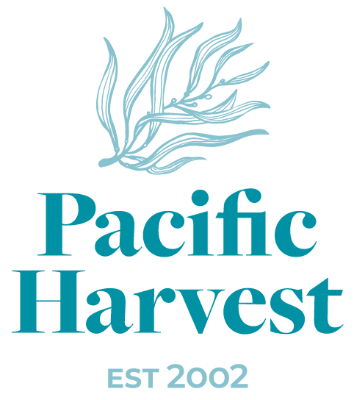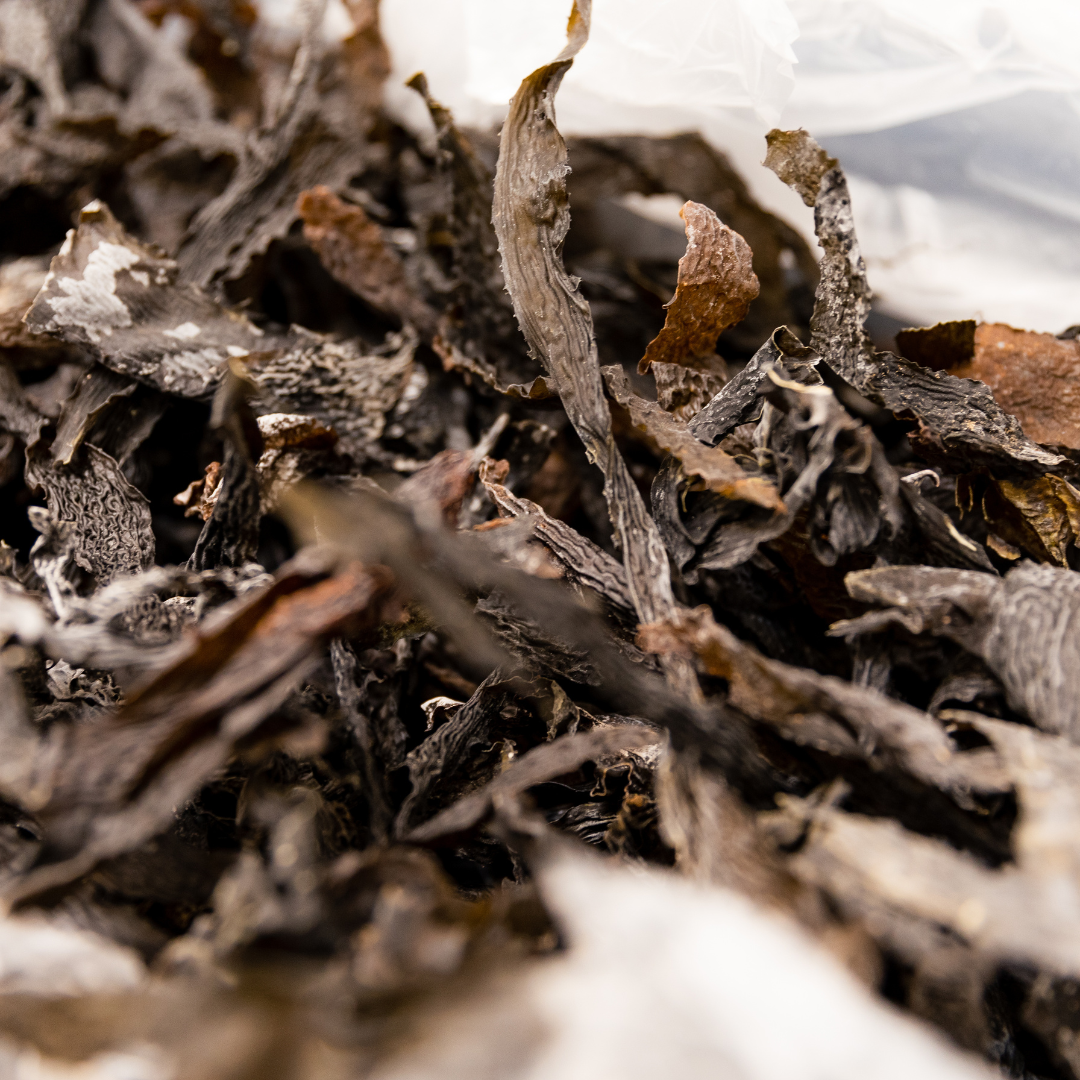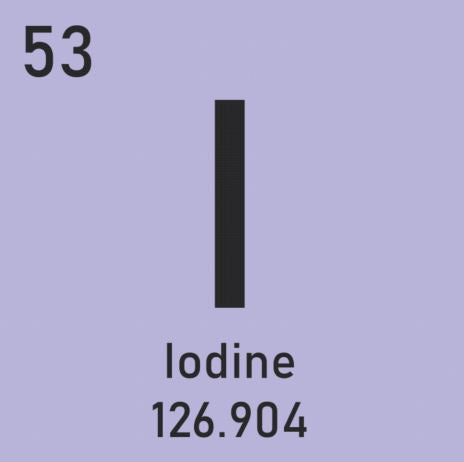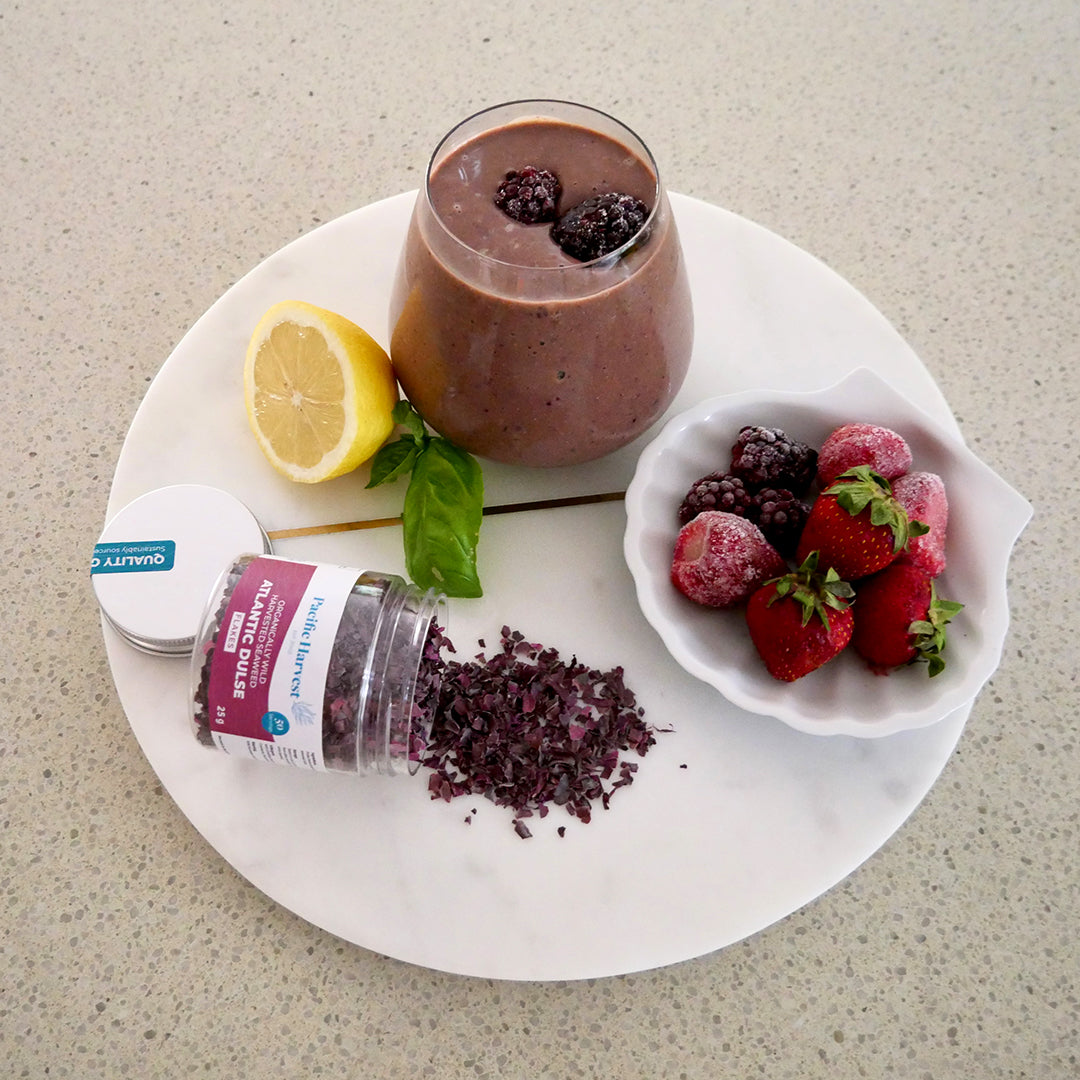What is Kombu Seaweed & How to Use It
Kombu is simply the Japanese word for dried sea kelp. Learn more about Kombu Strips and Kombu leaves and why you should pay attention to Kombu in your kitchen! Get started with a few ideas and recipes using Kombu or download our recipe brochure here.
Kombu vs Kelp what is the difference
Kelp (also called Kombu/Haidai) are large brown seaweeds (algae). Various species of kelp grow worldwide, depending on latitude, climate, currents and conditions. Kelps grow in underwater forests in relatively shallow oceans. They require nutrient-rich water with temperatures between 6 and 14 °C (43 and 57 °F) and are known for their rapid growth rate.
Kombu is made from the kelp sea plant, which is harvested, cut and laid to dry traditionally, maximising nutrient density and flavours. The exact type of kelp made into kombu varies according to location. In Japan, for instance,Saccharina japonica kelp is the most prolific. In contrast, we use Ecklonia radiata, harvested from the pristine waters of the North Island of New Zealand.
Kombu is highly valued for its abundance of essential minerals, vitamins, trace elements, and natural glutamic salts: a naturally sweet, superior flavour enhancer that creates the famous savoury “fifth taste”, also known as 'Umami' in Japanese cuisine.
What is a Kombu Strip vs. Kombu Leaf?

A kombu strip is made from the stem of the kelp sea plant, whereas the kombu leaf is the blade, frond, or leaf. Soon after harvest, they are both cut to size and laid flat to dry in a traditional way which maximises mineral value and flavour.
The kombu leaf is technically the kelp plant's blade or frond (leaf). It is softer, more malleable than the strip, and has a gentler flavour. It is excellent for use in making broths and soups but can also be used to wrap around fish, infusing a delicious taste and boost of minerals to your meal.
Kombu strips are rigid and can be a bit spikey to the touch. These are excellent to pop into the water to make broth or stock. They impart a more robust flavour, and we advise against eating them after soaking as they are adamant and chewy.
How does Kombu provide umami flavour?
You may notice a fine, fluffy white powder on Kombu strips and leaves. This is different from, as you may first assume, mould! It is an amino acid called glutamine which naturally rises to the surface of the seaweed as it dries. This is also the source of the beautiful umami flavour kombu can impart in meals.
This white powder, ‘glutamine’ is one of the 20 amino acids encoded by the standard genetic code. It is not recognised as an essential amino acid but may become necessary in certain situations, like intensive athletic training or gastrointestinal disorders. It is also said to be a superb brain fuel, and some people refer to it as a “smart vitamin” – although it is, in fact, not a vitamin at all.
Kombu left exposed to air, will become damp (like sea salt, the high quality minerals attract moisture), and its flavour will be reduced. We recommend keeping all seaweeds in an airtight container once opened. Damp kombu can be dried under the sun or in a low-temperature oven (47 C or lower). Note when you heat seaweed, the nutrient density can be impacted.
Everyday cooking with Kombu
Kombu/kelp is one of the three main ingredients needed to make dashi, a soup stock in many Japanese dishes. Making dashi is simple: a strip of dried kombu (or a tea strainer filled with kelp seasoning) is placed in cold water, then heated to near-boiling; then the flakes of dried, smoked bonito, a type of tuna, are added.
Adding a small piece of kombu or kelp seasoning to dried beans helps tenderise them as they cook, or add this seaweed to your stock ingredients or soup when making soups and stews (just as you may add a bay leaf). This imparts a beautiful depth and umami flavour to your food and infuses additional nutrients, essential minerals, and vitamins into your food.
Kombu and Weight Loss
A lot of academic literature suggests that kombu can play a positive role in weight loss and human health. In 2010 a group of researchers at the University of Newcastle found that a fibrous material in sea kelp (called alginate) was better at preventing fat absorption than most over-the-counter slimming treatments in laboratory trials. As a food additive, it may reduce fat absorption and, thus, obesity. Kombu/kelp contains very few calories and is a popular diet food. It has the most potassium of all the sea vegetables. Kelp contains fucoidan, a polysaccharide known to activate the liver cells. It is said to also be effective in cleaning the blood and decreasing cholesterol levels.
Get your pantry stocked with Kombu today! Browse our extensive recipe selection for inspiration and ideas.




